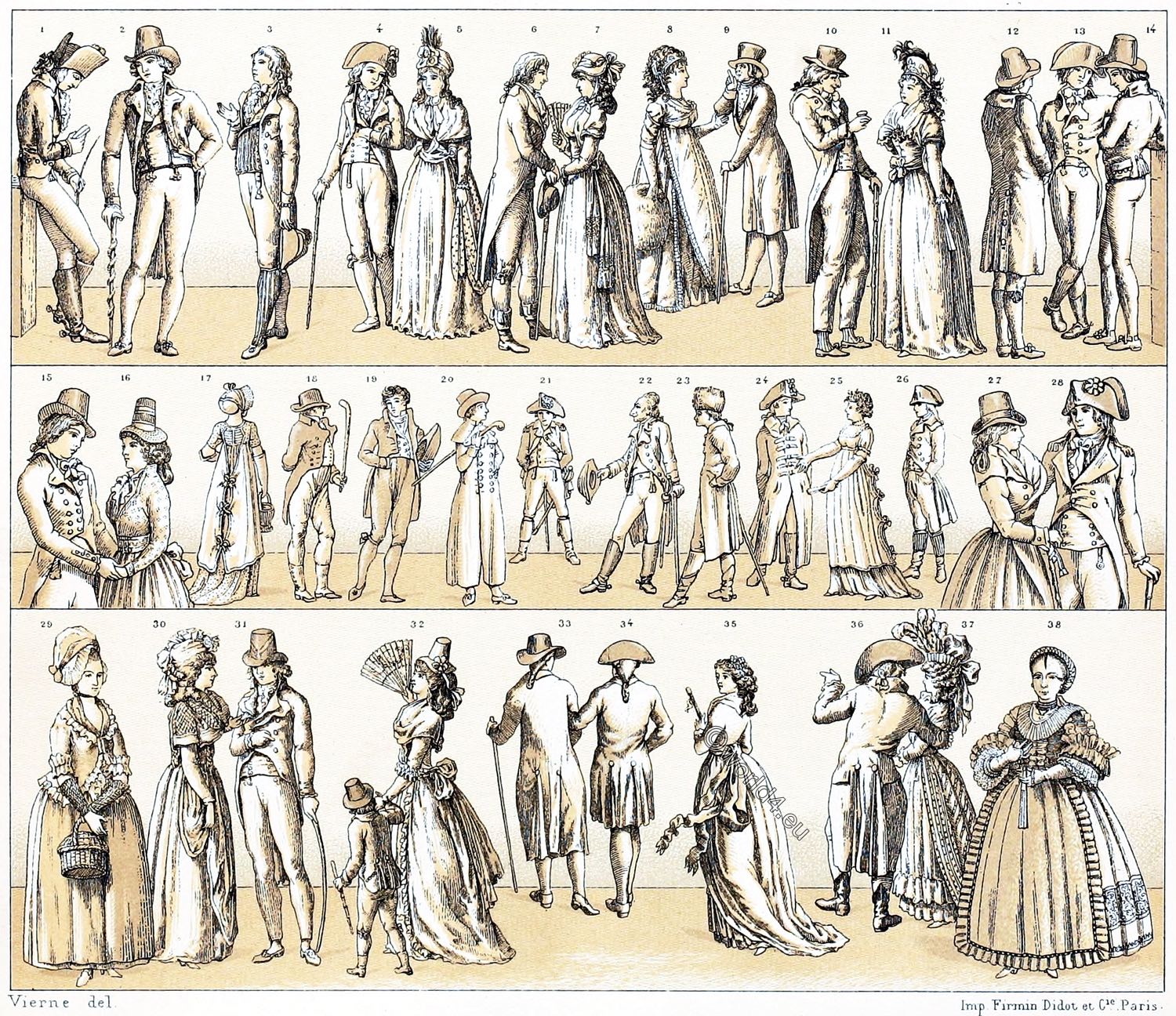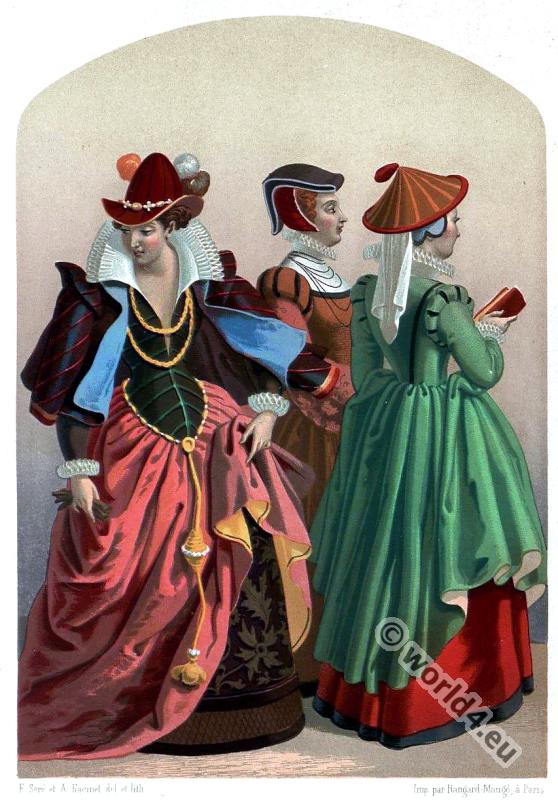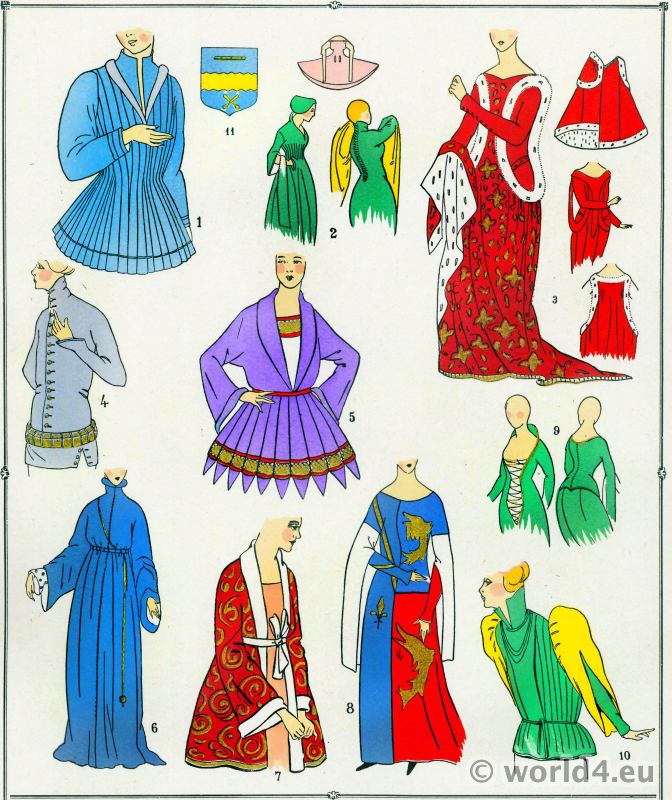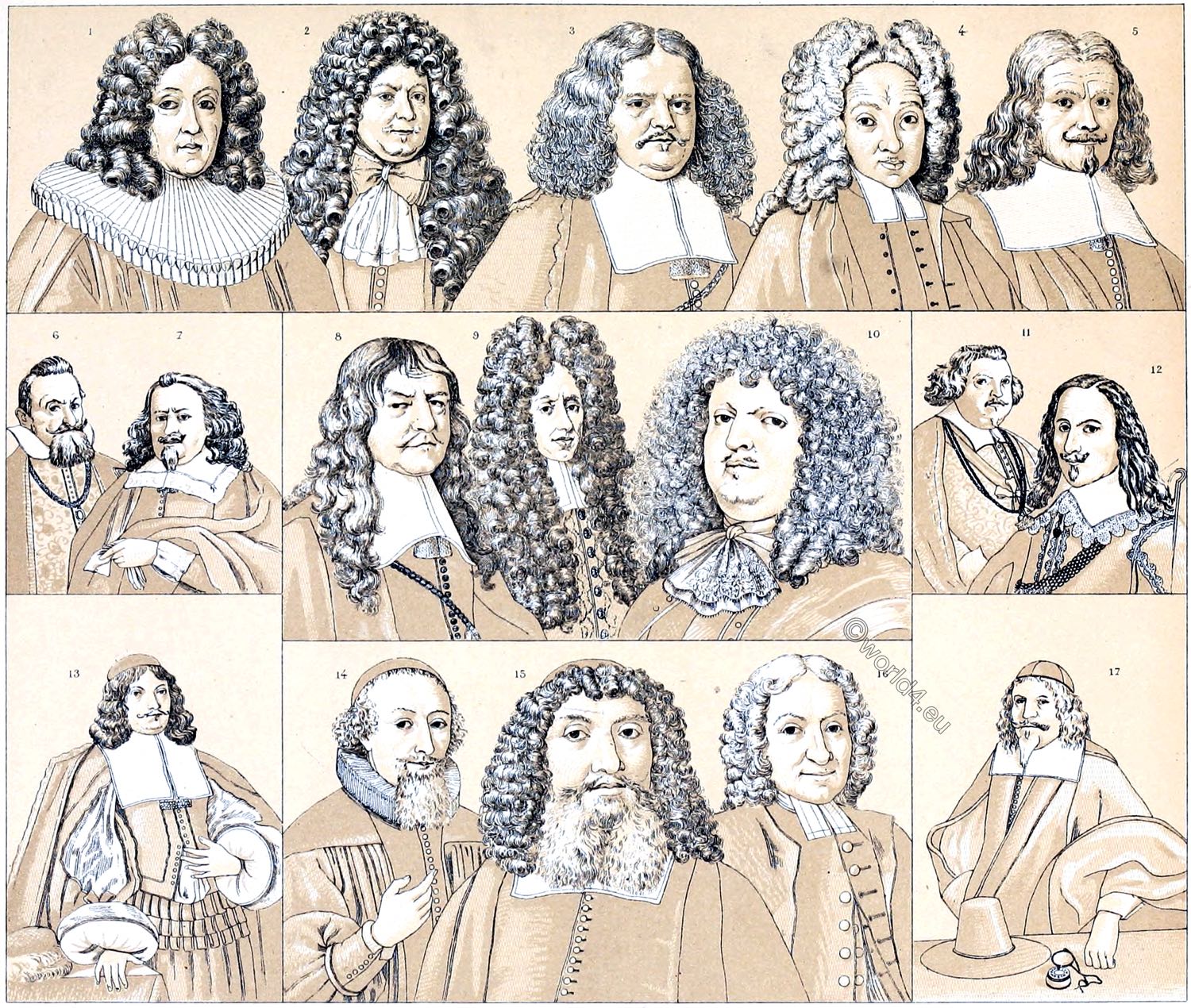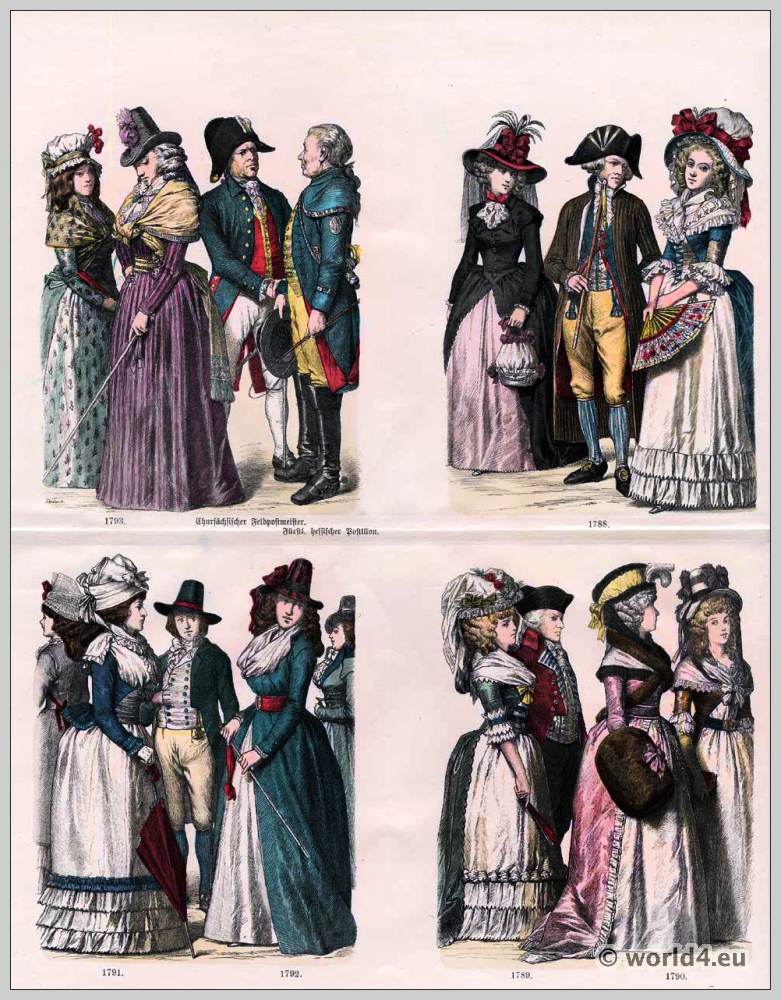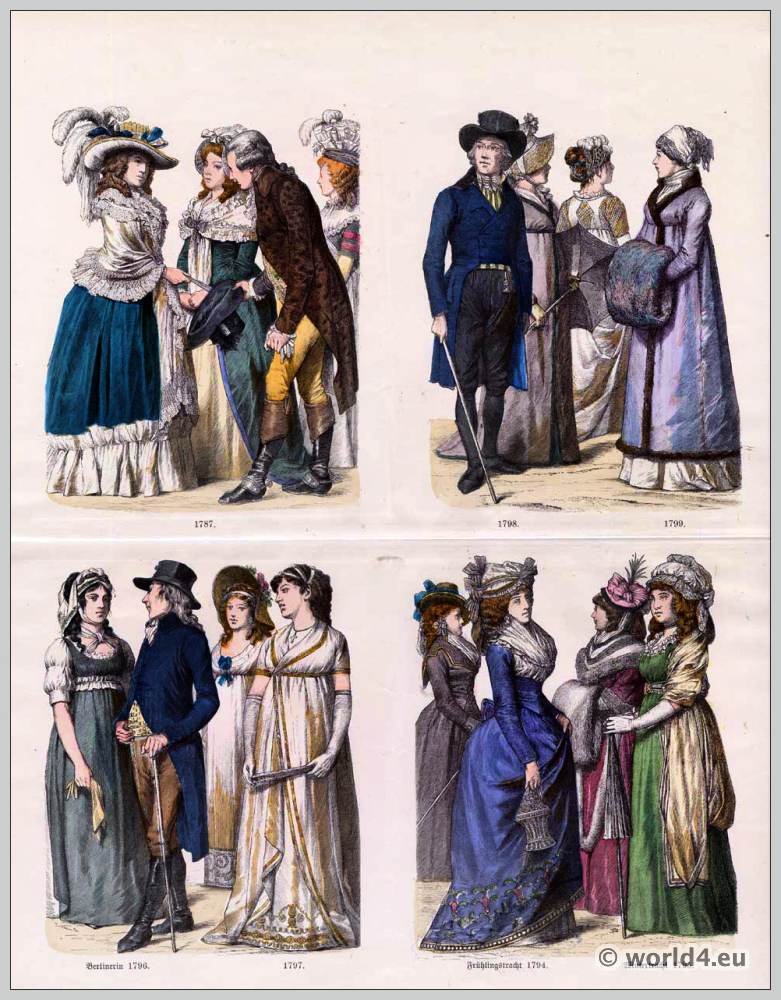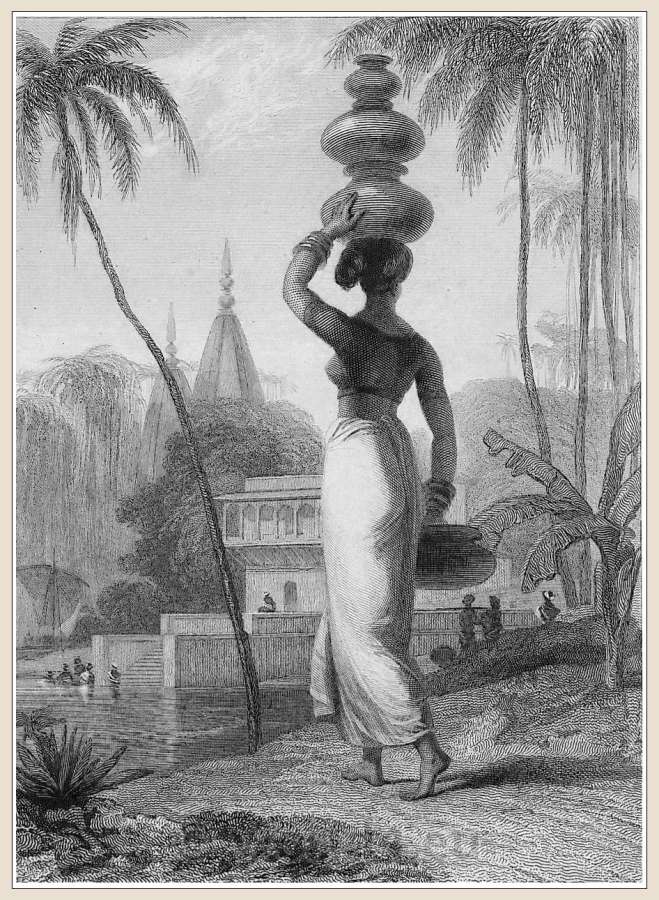EUROPE. 18TH CENTURY. THE FASHIONS OF THE END OF THE 18TH CENTURY. ACCORDING TO GERMAN JOURNALS.
The French influence.
Nos. 21, 22, 23, 24 and 26
1783-1789.
No. 3, 4, 5, 6, 7, 10, 11, 15, 16, 20, 21, 22, 23, 24, 26, 27, 28, 30, 31, 32, 33, 34, 35, 36 and 37 .
1794.
Nos. 1, 2, 12, 13 and 14.
1795.
No. 29 and 38.
1800.
No. 8, 9, 17, 18, 19 and 25.
1803.
France had no fashion journal during the Revolution; on the other hand, Cabinet de la Mode had appeared in Harlem since 1793, Galerie de la Mode in London since 1794, and the Berlin, Goettingen, and Leipzig Almanacs at the same time. The figures on our panel are especially taken from the latter.
Apart from the Frankfurt lady No. 29, who still wears the hood à la laitière and the caraco of Louis XVI’s time, the figures No. 5, 7, 11, 16, 27, 30, 32, 35 and 37 show the fichus menteurs and the gorges anglaises as they had remained until the development of the reign of terror; in addition, the long waist and the narrow sleeves are characteristic features. The headgear consists of the large feathered cap of puffed taffeta No. 37, the high silk hats No. 16 and 32, the helmet-like hat with horse tail No. 11, and the simple round hat No. 27, of the same shape for both sexes.
After the ninth Thermidor, the anglicized luxury brought across by the French emigrants became noticeable. Hairlines became lower; the powder disappeared; a preference for blonde wigs was taken; anti-Comania, combined with Anglomania, dominated the fashion.The German women Nos. 8, 17 and 25 belong to the time of the consulate, when the hairstyle à la Titus was replaced by à l’Antinous. The hat of No. 7 shows Anglomania in its purest form.
The innovations in the male costume were even stronger. Since 1790 the round high hat replaced the Suisse hat, which was left to the military. (Cf. no. 2, 12, 14, 15, 20, 31 and 33.) The skirt with long lobes (no. 12, 33, 34 and 37) made room for the tailcoat with two short lobes in front. A knotted lace tie, tight trousers going up to the calf, shaft boots or shoes and a large coat completed the costume.
The long overskirt (no. 20 and 24) was worn on morning promenades and unimportant visits. The young people often adopted the hunter’s or postillion jacket (nos. 1 and 14) as a riding costume. The military skirt (No. 21, 22 and 28) has been common since 1789.
The wigs with braided plaits and à catogan were worn only by old men; the young people wore the hair long, à la Titus, or short and lightly powdered. Under the reign of terror, the development of fashions began and reached perfection under the direction of the Directorate. Muscadins, Petits-Maitres and Incroyables belonged to this period (cf. nos. 9, 10, 18 and 19).
In place of the high hats worn throughout the day, for the evening the chapeau-claque came into fashion (No. 19). The shape of the coat has innumerable variations. The attempt to introduce fabric gaiters did not succeed, they disappeared in 1805.
Among the fashion types from the end of the 18th century, the Augsburg lady No. 38 is remarkable, who has retained the old costume reminiscent of the time of Pompadour.
All the figures on this panel show the predominant influence of the English-French fashions of Louis XVI’s time. No. 29 and 30 come from a series of engravings under the title Impressions of German National Costumes; Augsburg 1800. All other figures are borrowed from the Goettingen, Berlin and Leipzig Almanac, whose drawings Chodowiecki, Dietrich, Riepenhausen etc. supplied.
Cf. J.-B. Pujoulx, Paris at the end of the eighteenth century, year IX. – A. Gaillot, Mémoires pour servir à l’histoire des mores et usages des Français, 1827. Quicherat, History of costume in France. Paul Lacroix, Directoire, Consulat et Empire, Paris 1884.
Source: History of the costume in chronological development by Auguste Racinet. Edited by Adolf Rosenberg. Berlin 1888.
Related
Discover more from World4 Costume Culture History
Subscribe to get the latest posts sent to your email.

